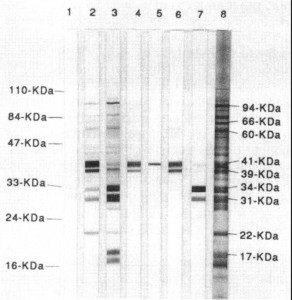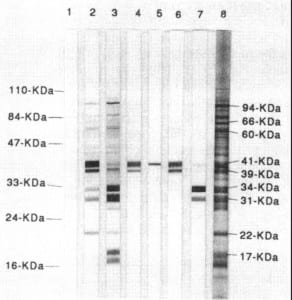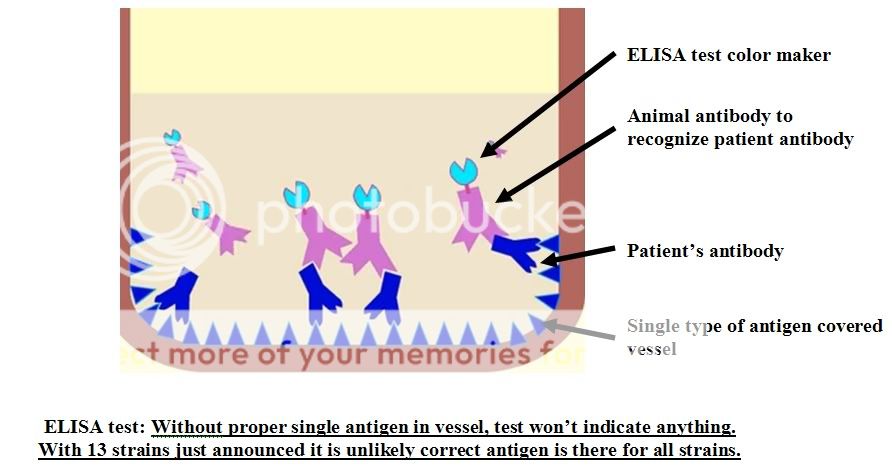
IgM levels increase to maximum concentrations at about six weeks and then begin to decline. burgdorferi IgM (immunoglobulin M) antibodies are usually detectable in the blood about two to three weeks after exposure. It takes the body some time to begin producing B. If left untreated, Lyme disease may progress to cause intermittent joint pain, meningitis, facial paralysis (Bell's palsy), weakness and numbness in the arms and legs, memory problems, and may rarely affect the heart or eyes. Lyme disease infection causes symptoms that may include a characteristic "bulls-eye" rash that spreads from the site of the bite, fever, chills, headache, and fatigue. The disease is most common in the spring and summer in the regions where these ticks live, the northeastern and western United States. Infected deer ticks or black-legged ticks transmit this bacterium to a person through a bite. burgdorferi), the bacterium that causes Lyme disease.

These antibodies are produced by the body's immune system in response to exposure to Borrelia burgdorferi ( B. Lyme disease tests measure Borrelia burgdorferi antibodies in the blood or in the cerebrospinal fluid (CSF) if there are signs and symptoms of central nervous system disease. Proteínas totais e relação albumina/globulinas.Microalbuminúria e relação microalbuminúria/creatinina.Identificação de Anticorpos Anti-Hemácias.Hemoglobina glicada e glicemia média estimada.Eletroforese de Proteínas e Imunofixação.Clostridium difficile e Teste para Toxinas de C.Proc Am College Vet Pathol Ann Mtg, Vancouver, BC, Nov, 2017. Histologic and immunohistochemical characteristics of 19 cases of equine cutaneous pseudolymphoma and the association with Borrelia burgdorferi. A case of Borrelia-associated cutaneous pseudolymphoma in a horse. This case highlights an unusual manifestation of an emerging disease in Ontario. The veterinary practice submitting these 2 equine cases is located in an area of eastern Ontario experiencing a significant expansion of tick populations, including Ixodes scapularis, the vector of Lyme disease, and several ticks were anecdotally removed from the mare over the course of the preceding autumn. burgdorferi, although most cases remain idiopathic.

In humans, development of cutaneous pseudolymphoma has been associated with various localized antigenic stimuli, including injected irritants/foreign substances such as drugs, vaccines or tattoo ink, arthropod bites, and infectious agents including B. Subsequent serologic testing of the mare was also positive on the equine Lyme disease multiplex assay. Both cases were positive for Borrelia spp., however only the recent case was confirmed positive on the second-step confirmatory qPCR test targeting the B. on the FFPE from both of the AHL equine biopsy cases, targeting a 75-bp fragment of the 23S rRNA region of B. Based on these reports, we ran a screening qPCR assay for Borrelia spp. burgdorferi, again using PCR primers targeting the ospA gene. 2 One of the 19 cases was also positive for B.

The second was a conference abstract reporting 19 cases of so-called “pseudolymphoma”, a term borrowed from the human literature to describe this non-neoplastic lymphoproliferative process. The lesions in this horse resolved following a 30-day course of doxycycline therapy. burgdorferi ospA gene, run on formalin-fixed paraffin-embedded (FFPE) tissue, was also positive. 1 This horse subsequently tested positive by serum ELISA and western blot for Borrelia burgdorferi, and a PCR assay using primers targeting the B. Interestingly, this was the second such biopsy we have received from 2 unrelated horses from this practice over the last 2 years.Ī literature search of this unusual cutaneous lesion revealed two published reports, the first a single case report from a horse with multiple dermal papules developing at the site of previous removal of an engorged tick. Additional clonality testing targeting the equine B lymphocyte immunoglobulin heavy chain locus (IGH) revealed polyclonal rearrangements with 2 different primer sets (FR2/FR3), supporting the diagnosis of a reactive rather than a neoplastic process. The presumptive histologic diagnosis was atypical cutaneous nodular lymphoid hyperplasia. On histologic examination, the biopsies revealed nodular-to-diffuse dermal infiltrates of lymphocytes forming discrete follicular structures, often with prominent germinal centers and eccentrically positioned peripheral mantle zones of smaller mature lymphocytes ( Fig. Three punch biopsies were received from a 5 x 3 x 1 cm raised mass on the left hindlimb of a 12-y-old Hanoverian mare, located near the base of the hamstrings ( Fig. Margaret Stalker, Stefan Keller, Lisa Ledger, Murray Hazlett, Tiffany Richards Atypical cutaneous nodular lymphoid hyperplasia (“pseudolymphoma”) associated with Borrelia burgdorferi infection in a horse


 0 kommentar(er)
0 kommentar(er)
